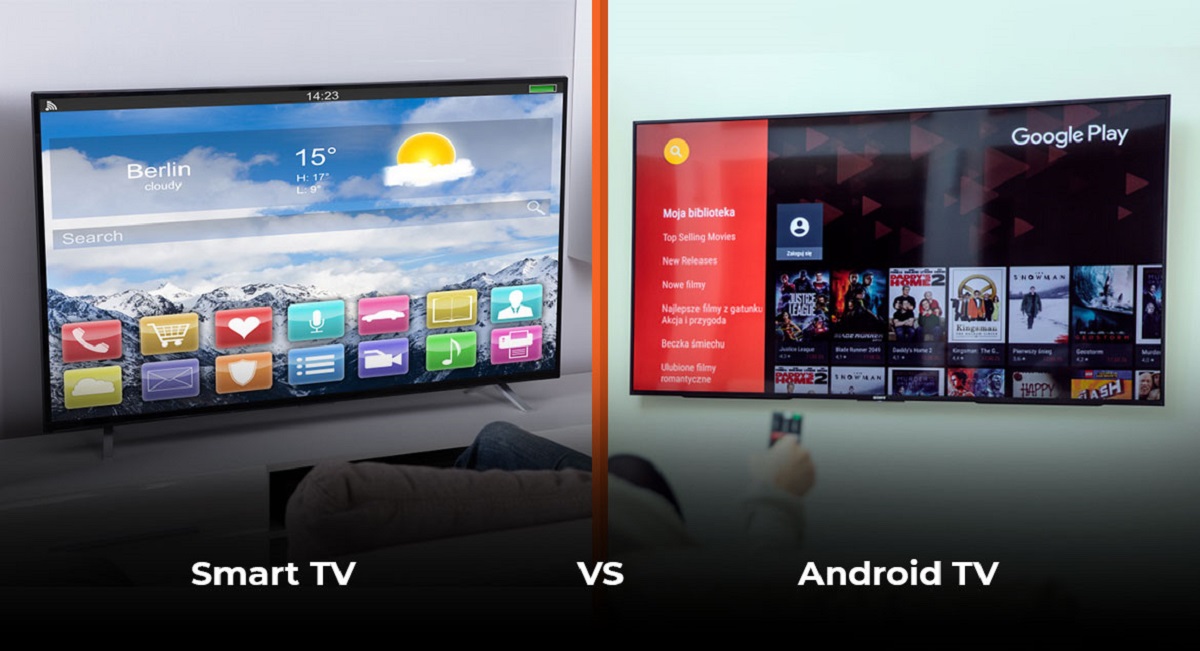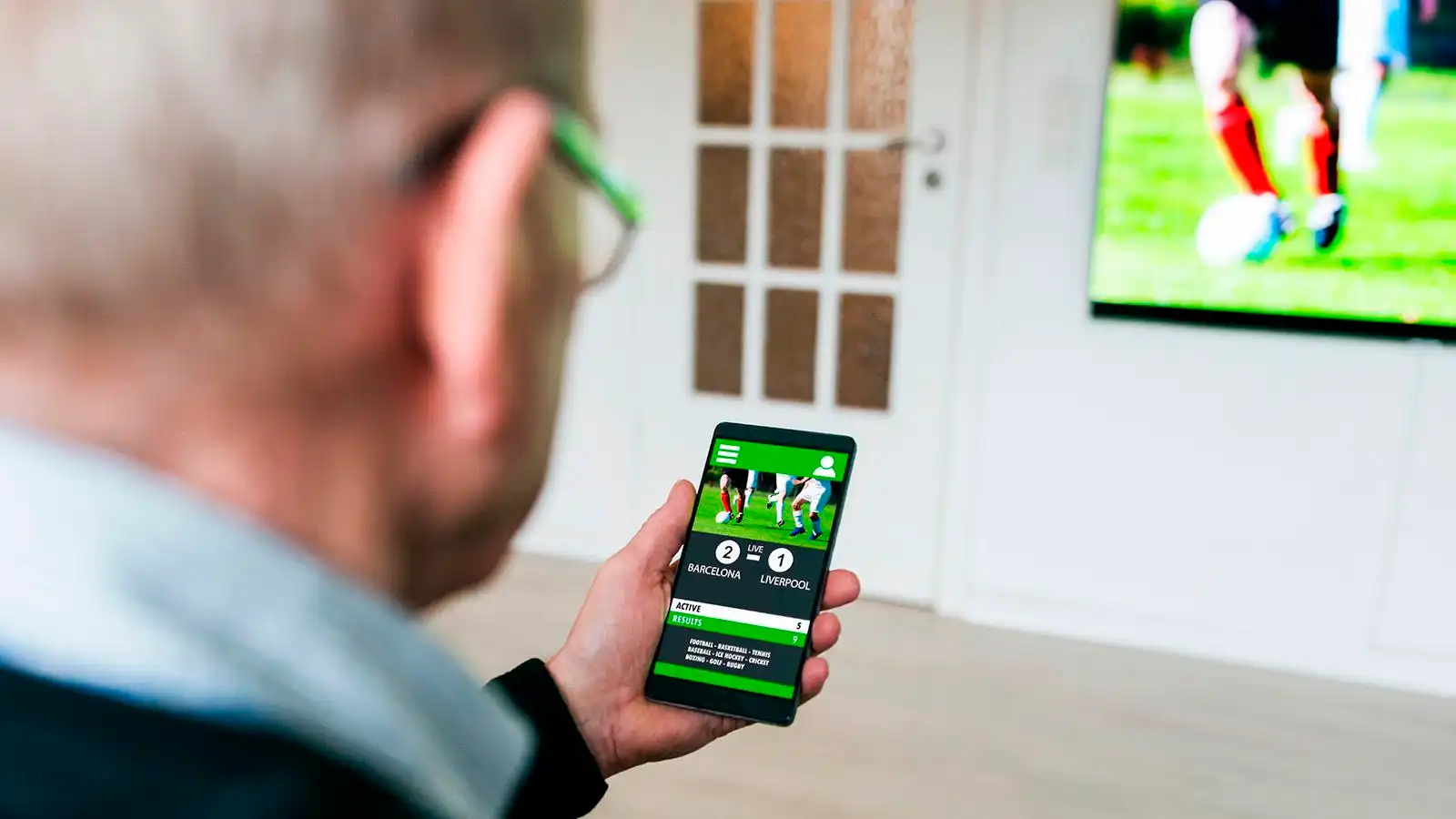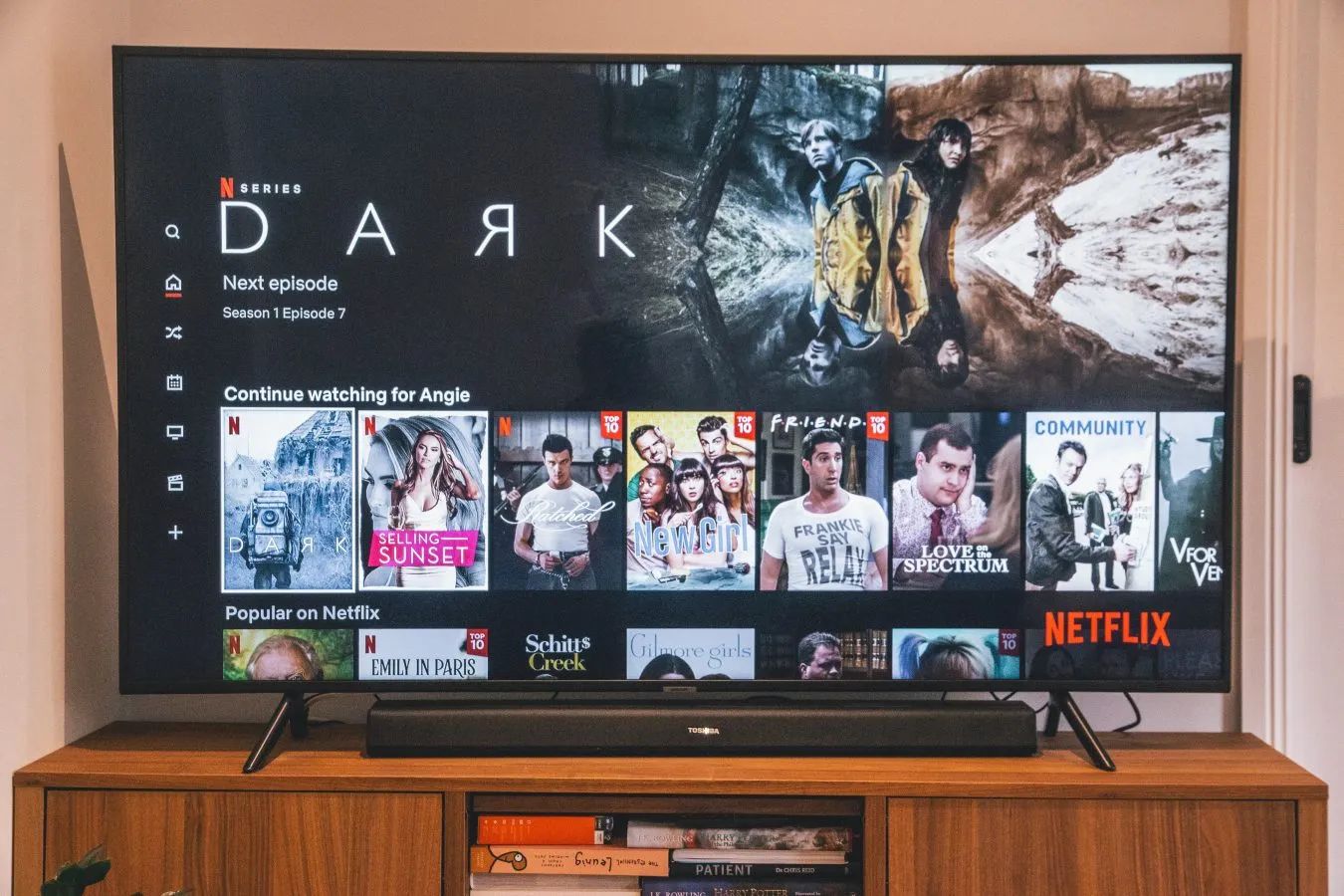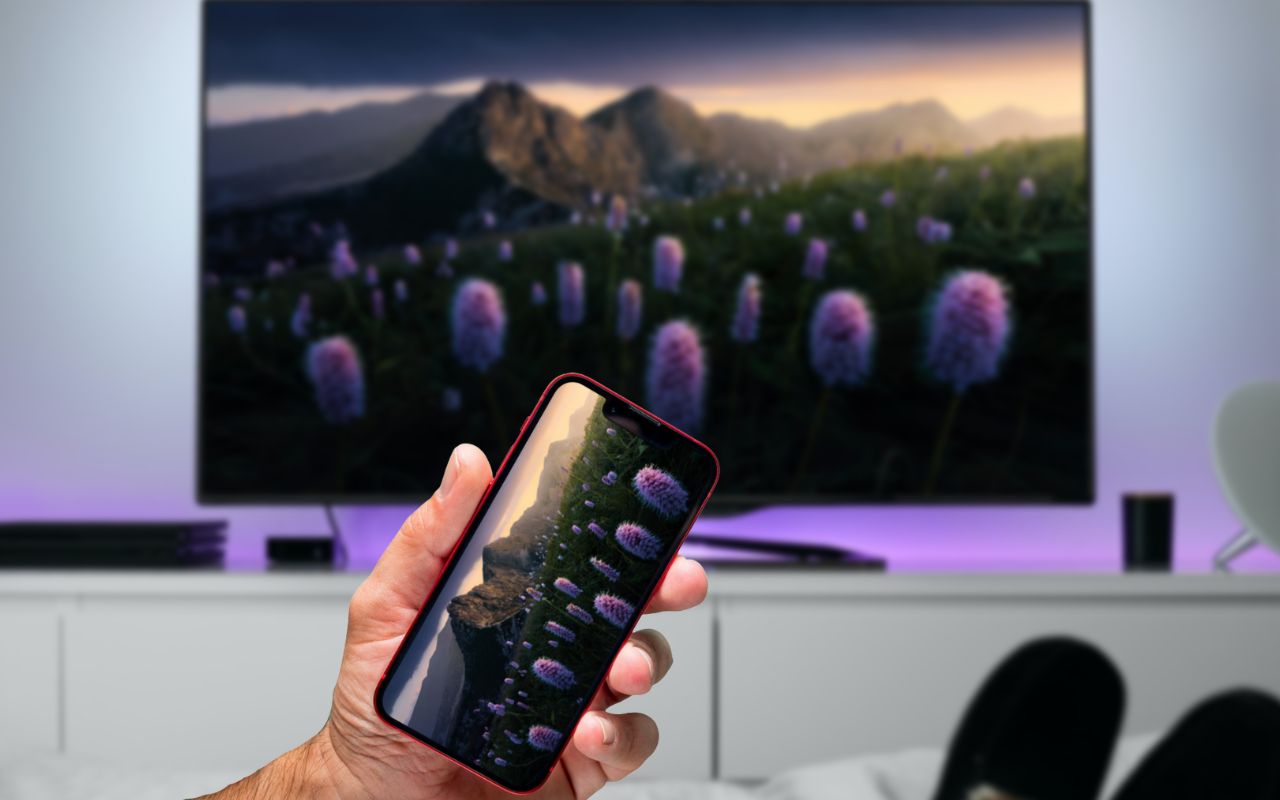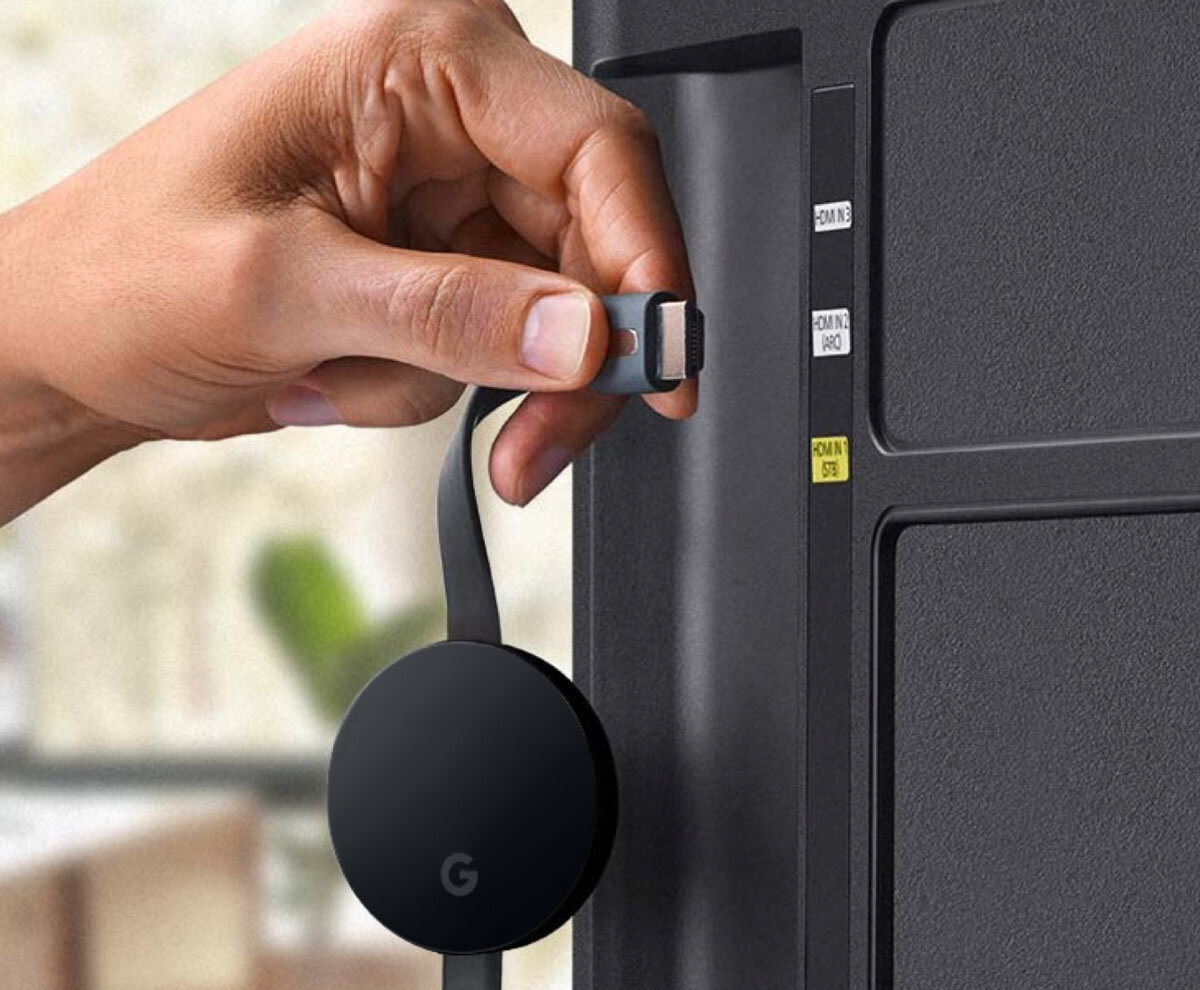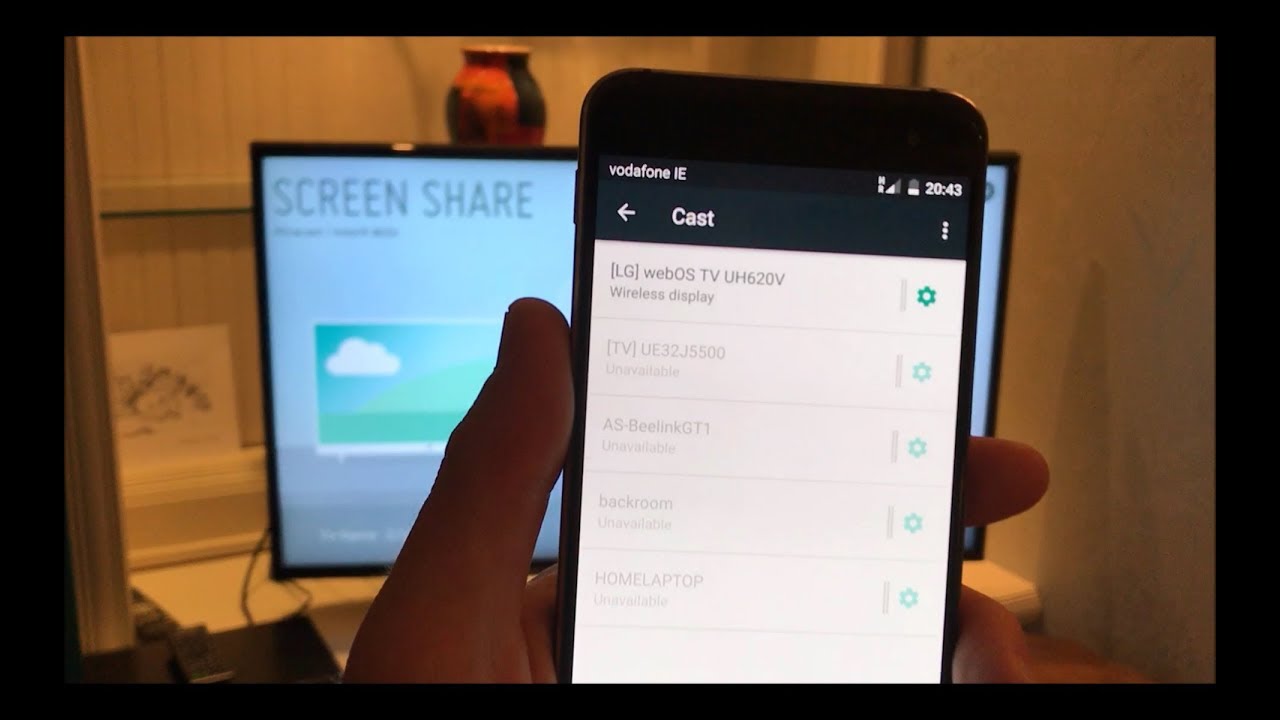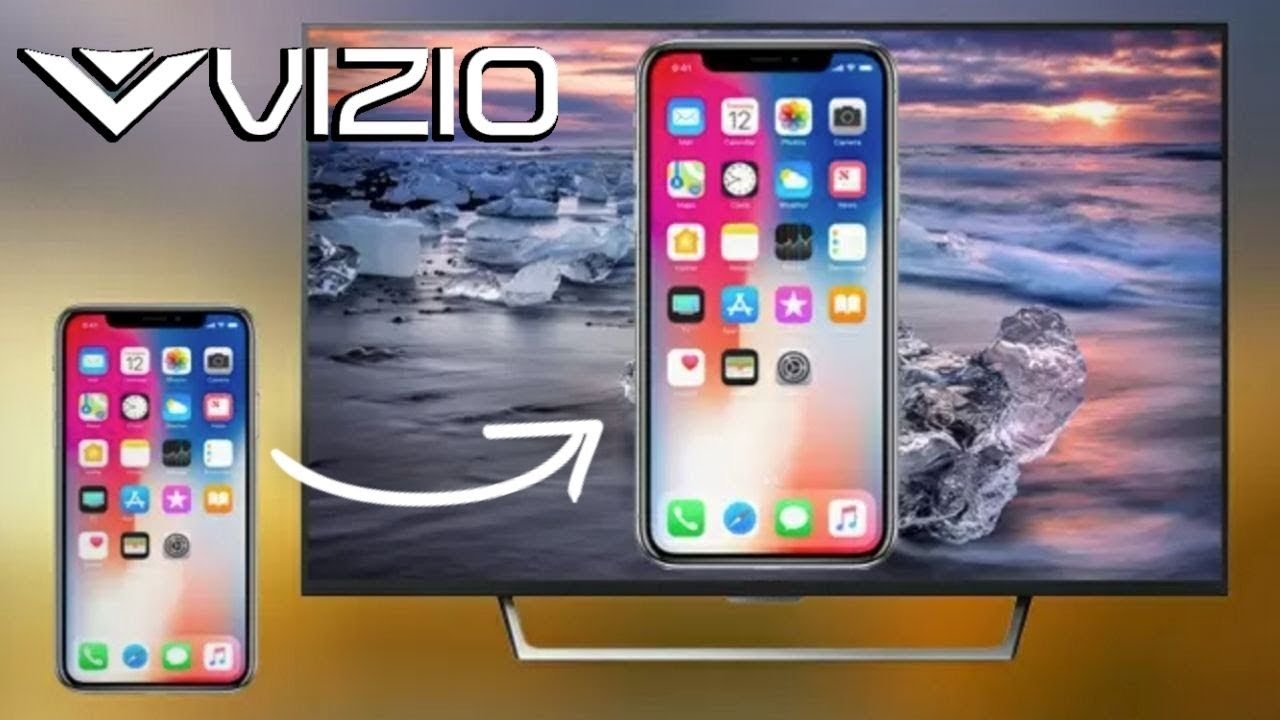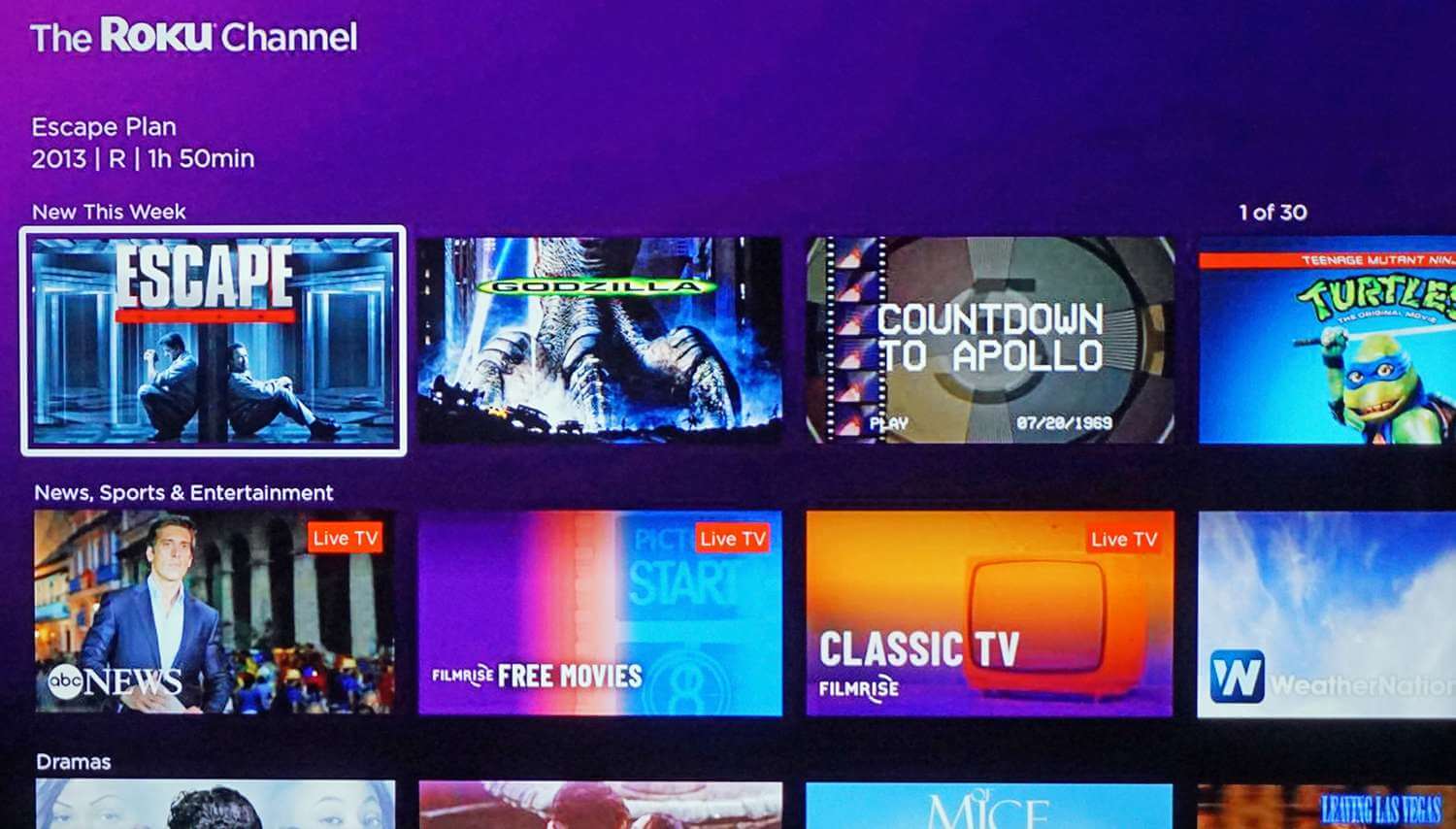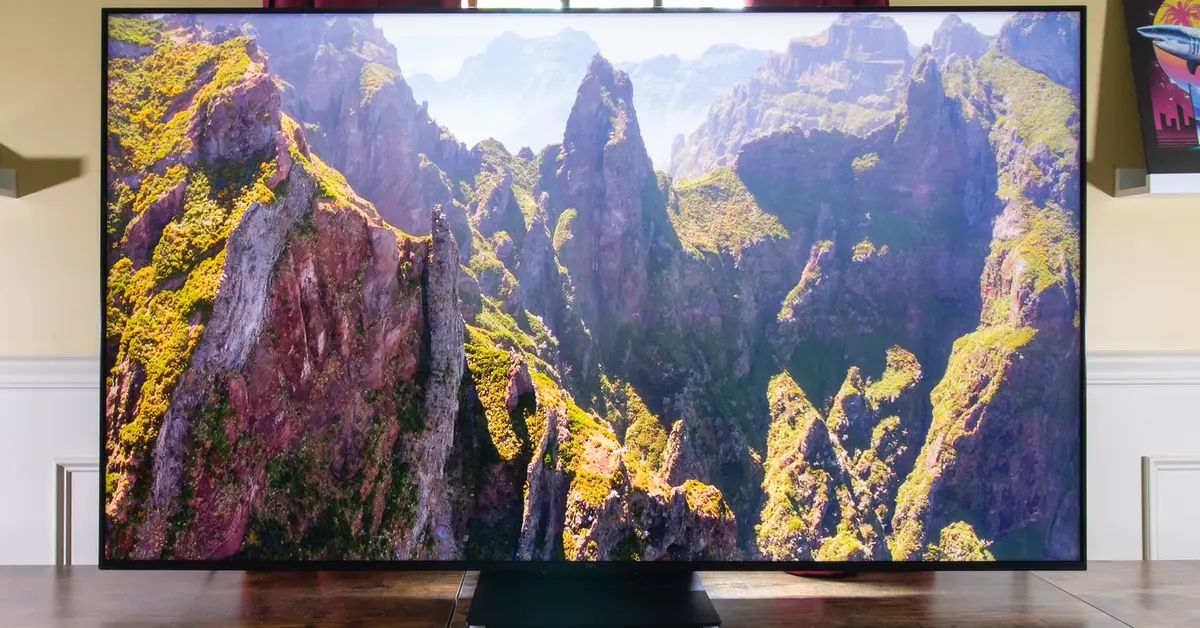Introduction
When it comes to choosing a new television, consumers are often confronted with an array of options, including Smart TVs and Android TVs. While these terms may sound similar, there are key differences that set them apart. Understanding these differences can help you make an informed decision when purchasing a new television.
A Smart TV is a television that is equipped with internet connectivity and offers advanced features beyond traditional viewing. It allows users to access online content, stream videos, browse the internet, and even interact with various applications. On the other hand, an Android TV is a specific type of Smart TV that runs on the Android operating system, developed by tech giant Google.
Both Smart TVs and Android TVs have revolutionized the way we consume media and interact with our televisions. However, it’s important to delve deeper into their specifications and capabilities to understand which option suits your needs and preferences.
In this article, we will explore the differences between Smart TVs and Android TVs, looking at various aspects such as operating systems, app store availability, interface and user experience, integration with other devices, voice control, virtual assistants, and price range. By the end of this article, you will have a clearer understanding of which type of television best meets your requirements.
Definition of Smart TV
A Smart TV, also known as a connected TV, is a television set with built-in internet connectivity and advanced features that go beyond traditional television viewing. Smart TVs can connect to the internet through Wi-Fi or Ethernet and offer a wide array of online services and applications.
One of the main features of a Smart TV is the ability to access streaming services and online content directly through the television screen. Popular streaming platforms like Netflix, Hulu, and Amazon Prime Video are often pre-installed on Smart TVs, allowing users to stream movies, TV shows, and other media effortlessly.
Smart TVs also offer web browsing capabilities, allowing users to surf the internet, access social media platforms, and stay up-to-date with the latest news and trends. Some models even support video calling through popular apps like Skype, enabling users to connect with friends and family directly from their living rooms.
Additionally, Smart TVs often come with a variety of built-in applications and widgets that cater to different interests and needs. These can include weather updates, music streaming services, gaming apps, and more. Users can also download additional applications from the respective app stores available on their Smart TV models.
Furthermore, Smart TVs usually have USB ports and HDMI inputs, allowing users to connect external devices such as gaming consoles, Blu-ray players, and sound systems. This enables a seamless integration of various entertainment devices and enhances the overall viewing and audio experience.
Overall, the main purpose of a Smart TV is to provide users with a centralized hub for all their entertainment and connectivity needs. It combines traditional television functions with internet-based services and applications, creating a versatile and interactive viewing experience.
Definition of Android TV
An Android TV is a specific type of Smart TV that operates on the Android operating system, developed by Google. It offers all the features of a regular Smart TV, such as internet connectivity and access to streaming services, but with the added benefit of the Android platform’s flexibility and ecosystem.
Android TV provides a seamless integration with Google services and applications, making it a powerful and versatile entertainment hub. Users can easily access popular streaming platforms like Netflix, YouTube, and Disney+ directly from the Android TV interface.
One of the key advantages of Android TV is its app ecosystem. Being built on the Android platform, it offers a vast range of applications that users can download from the Google Play Store. This means that users can expand the functionality of their Android TV by installing games, productivity apps, and other media streaming services.
Another distinguishing feature of Android TV is its integration with Google Assistant, a virtual assistant designed to make everyday tasks easier. Users can control their television using voice commands, search for specific content, adjust settings, and even control other compatible smart devices in their home.
Android TV is also known for its intuitive and user-friendly interface. The home screen is designed to provide quick access to recommended content, personalized suggestions, and a customizable layout. Users can tailor their Android TV experience by organizing their favorite apps and content in a way that suits their preferences.
Additionally, Android TV supports Google Cast technology, allowing users to stream content directly from their mobile devices, tablets, or computers to the television screen. This opens up a wide range of possibilities for enjoying multimedia content from different sources on a larger display.
Overall, Android TV combines the features of a Smart TV with the power of the Android operating system, providing users with a seamless and customizable entertainment experience. Its extensive app ecosystem, integration with Google Assistant, and user-friendly interface make Android TV a popular choice for those seeking a versatile and connected television solution.
Operating Systems
One of the key differences between a Smart TV and an Android TV lies in the operating system they use. While Smart TVs can run on a variety of operating systems depending on the manufacturer, Android TVs specifically operate on the Android operating system developed by Google.
Smart TVs often use proprietary operating systems that are customized by the manufacturers themselves. These operating systems are designed to integrate seamlessly with the television hardware and provide a user-friendly interface for navigating through various features and applications. Some popular proprietary operating systems for Smart TVs include Samsung’s Tizen, LG’s webOS, and Sony’s Linux-based operating system.
On the other hand, Android TVs run on the Android operating system, which is renowned for its versatility, compatibility, and wide range of applications. Android TV’s use of this well-established platform allows it to provide users with a familiar interface and access to a vast library of applications through the Google Play Store.
The Android operating system offers users the ability to customize their home screens with a wide range of widgets and shortcuts, providing quick access to frequently used apps and content. It also supports voice search and integration with Google services, allowing users to easily find and control the content they want to view.
Another advantage of Android TV’s operating system is its ability to receive regular software updates from Google. These updates bring new features, fixes, and security patches, ensuring that the TV remains up-to-date and capable of running the latest applications.
Smart TVs, while not running on the Android operating system, can offer their own set of unique features and benefits through their proprietary operating systems. These systems are specifically tailored to the respective television brand and may provide seamless integration with other brand-specific devices or services.
Ultimately, the choice between a Smart TV and an Android TV may come down to personal preference and the specific features and capabilities offered by the respective operating systems. While Smart TVs offer a range of customization and integration options through their proprietary systems, Android TVs provide the familiarity, versatility, and extensive app ecosystem associated with the Android operating system.
App Store Availability
When it comes to accessing and downloading applications, the availability of an app store plays a significant role in the overall user experience. In this regard, there are notable differences between Smart TVs and Android TVs.
Smart TVs, depending on the manufacturer and operating system they use, may have their own dedicated app store. For example, Samsung Smart TVs have the Samsung Smart Hub, LG Smart TVs have the LG Content Store, and Sony Smart TVs have the Sony Select store. These app stores offer a selection of applications that are specifically curated for the respective brand’s Smart TV platform.
However, it’s worth noting that the number of available applications in proprietary app stores may be limited compared to what is available in a more widely recognized app store like the Google Play Store for Android TVs. This can reduce the variety and choice of applications available to Smart TV users.
In contrast, Android TVs have access to the Google Play Store, which boasts a vast library of applications and games. The Google Play Store offers a wide range of streaming services, social networking apps, productivity tools, games, and much more. This extensive selection ensures that Android TV users have access to a diverse range of content and functionality.
Moreover, Android TV users can benefit from the regular updates and optimizations that Google provides for the apps available through the Google Play Store. This continuous support helps ensure that applications run smoothly and are compatible with the latest features of the Android TV platform.
While some Smart TVs may have their own dedicated app stores, the availability and choice of applications can vary. Users may find that certain popular applications or services may not be available on their Smart TV’s app store. This limitation can restrict the overall capabilities and flexibility of the Smart TV platform.
In summary, Android TVs have a clear advantage when it comes to app store availability. The Google Play Store provides a wide range of applications and regularly updates them, giving Android TV users access to a diverse and constantly evolving ecosystem. While Smart TVs may have their own app stores, the limited selection of applications can hinder the overall user experience and functionality.
Interface and User Experience
The interface and user experience of a television can greatly impact the overall usability and enjoyment of the device. Both Smart TVs and Android TVs offer their own unique interface design and user experiences.
Smart TVs typically have a custom interface developed by the manufacturer. These interfaces are designed to be intuitive and user-friendly, providing easy access to various functions and features. Manufacturers often prioritize simplicity and ease of use, ensuring that users can navigate through menus, inputs, and settings without confusion.
Smart TV interfaces often feature a home screen that displays a selection of recommended content, popular apps, and various inputs or sources. This allows users to quickly access their preferred apps and media sources with minimal effort. However, the layout and organization of the interface can vary between different manufacturers, leading to some variation in the user experience.
Android TVs, on the other hand, provide a consistent and familiar user experience based on the Android operating system. The interface is designed to be visually appealing and customizable, allowing users to personalize their home screens and arrange their favorite apps and widgets.
Android TV interfaces often feature a row-based design, where users can horizontally scroll through recommendations, apps, and media content. This layout enables easy access to content and applications, as well as quick navigation between different sections of the interface.
One notable advantage of Android TV’s interface is its integration with Google services and voice search. Users can use the built-in Google Assistant to search for content, control playback, and even interact with other smart devices in their homes. This voice control feature enhances the overall user experience and makes navigation more convenient.
Furthermore, Android TV interfaces benefit from the extensive app ecosystem available via the Google Play Store. Users can discover and download a wide variety of apps, games, and media services to enhance their entertainment options and tailor their TV experience.
In summary, Smart TVs and Android TVs offer different interface designs and user experiences. Smart TVs provide custom interfaces developed by manufacturers, focusing on simplicity and ease of use, while Android TVs offer a consistent and customizable interface based on the Android operating system. Android TV’s integration with Google services, voice search capabilities, and access to a vast app ecosystem give it an edge in delivering a seamless and enriched user experience.
Integration with Other Devices
The ability to seamlessly integrate with other devices is an important consideration when choosing a television. Both Smart TVs and Android TVs offer various levels of compatibility and connectivity with external devices.
Smart TVs generally provide a range of connectivity options, such as HDMI ports, USB ports, and audio jacks, allowing users to connect external devices like gaming consoles, Blu-ray players, sound systems, and more. This integration allows for a unified entertainment experience, where users can switch between different devices without changing input sources on the TV.
Moreover, some Smart TVs offer advanced features like screen mirroring or casting, allowing users to mirror their smartphone or tablet screens directly to the TV. This enables content sharing or streaming media from mobile devices to the larger TV screen, enhancing the overall viewing experience.
On the other hand, Android TVs also excel in integration with other devices, particularly those that are part of the Google ecosystem. Android TVs can be linked to Google accounts, providing access to personalized content and preferences across multiple devices.
Android TVs support Google Cast technology, which allows users to stream content from their mobile devices, tablets, or computers directly to the TV. This wireless casting feature makes it easy to display photos, videos, and applications on the big screen without the need for any physical cables.
In addition, Android TVs can connect with smart home devices that are compatible with Google Assistant, allowing users to control their lights, thermostats, and other connected devices using voice commands through the TV.
Overall, both Smart TVs and Android TVs offer integration options with external devices, but Android TVs, due to their connection with Google services and support for Google Cast technology, provide a more seamless integration experience. Users can enjoy a broader range of compatible devices and control them through a unified interface, enhancing the convenience and interconnectedness of their entertainment setup.
Voice Control and Virtual Assistants
Voice control and virtual assistants have become increasingly popular features in modern televisions, transforming the way we interact with our devices. Smart TVs and Android TVs offer varying degrees of voice control capabilities and virtual assistant integration.
Smart TVs often come equipped with their own voice control features, allowing users to navigate menus, search for content, and adjust settings using voice commands. These voice control systems are designed to understand natural language and provide a hands-free alternative to traditional remote control navigation.
However, the functionality of voice control on Smart TVs can vary depending on the manufacturer and the model. Some Smart TVs may offer basic voice commands for basic functions like volume control or changing channels, while others have more advanced voice recognition capabilities, enabling users to search for specific content, launch applications, or even control other compatible smart home devices.
On the other hand, Android TVs benefit from their integration with Google Assistant, a powerful virtual assistant developed by Google. Android TVs with Google Assistant support allow users to control the television and access a wide range of voice-enabled functionalities.
With Google Assistant, Android TV users can perform complex searches, ask questions, get personalized recommendations, and control various aspects of their entertainment experience using voice commands. Additionally, Google Assistant can interact with other smart devices in the home, allowing users to control lights, thermostats, and other compatible devices without having to leave the couch.
Furthermore, Google Assistant’s language recognition capabilities and extensive knowledge graph allow for more contextually aware and conversational interactions. Users can ask follow-up questions, request specific recommendations, and receive personalized responses based on their preferences and previous usage patterns.
In summary, both Smart TVs and Android TVs offer voice control features, but Android TVs with Google Assistant integration provide a more advanced and comprehensive virtual assistant experience. The ability to control the television, perform complex searches, interact with other smart devices, and access a vast knowledge graph give Android TVs an edge in terms of voice control capabilities and overall convenience.
Price Range
Price is an important factor for many consumers when considering a new television. The price range of Smart TVs and Android TVs can vary significantly based on factors such as brand, size, features, and overall quality.
Smart TVs come in a wide range of price points, offering options for different budgets. Entry-level Smart TVs tend to be more affordable, especially those with smaller screen sizes and basic features. As you move up the price range, Smart TVs with larger screens, higher resolution displays, and more advanced features become available.
Brand reputation also plays a role in the price of Smart TVs. Established and popular brands often command higher prices due to their reputation for quality and customer support. However, there are also budget-friendly options from lesser-known brands that offer competitive features and functionality.
Android TVs, being a subset of Smart TVs, generally fall within a similar price range as Smart TVs. Prices can vary depending on the brand, the size of the TV, the specific model, and the additional features it offers.
High-end Android TVs with larger screen sizes, superior picture quality, and advanced features like OLED or QLED displays tend to be more expensive compared to entry-level Android TVs. These high-end models are often priced at a premium to reflect the quality and technology they offer.
It’s important to note that while Android TVs may offer more advanced features and access to the Google Play Store ecosystem, these additional capabilities can come with a higher price tag compared to traditional Smart TVs with proprietary operating systems.
In summary, both Smart TVs and Android TVs are available in a range of prices to suit various budgets. Smart TVs offer options for different price points, with more advanced features and larger screen sizes commanding higher prices. Android TVs, as a subset of Smart TVs, generally fall within a similar price range but may be priced slightly higher due to the added functionality and integration with the Android operating system and Google services.
Conclusion
When it comes to choosing between a Smart TV and an Android TV, several factors need to be considered. Both types of televisions provide internet connectivity and advanced features, but they differ in terms of operating systems, app store availability, interface and user experience, integration with other devices, voice control capabilities, and price range.
Smart TVs offer a wide range of options, with various manufacturers using their own proprietary operating systems. They provide a user-friendly interface, access to streaming services, and integration with other devices through HDMI and USB ports. However, the app store availability may be limited compared to Android TVs, and the overall user experience can vary depending on the manufacturer and model.
Android TVs, on the other hand, run on the Android operating system and offer a more consistent and customizable user experience. They have access to the Google Play Store, which provides a vast selection of applications and games, along with regular updates and optimizations. Android TVs also integrate seamlessly with other Google services and support voice control through Google Assistant, enhancing overall convenience and interconnectivity.
In terms of price range, both Smart TVs and Android TVs cater to different budgets, with options available for different price points, screen sizes, and features. High-end Android TVs may command a premium due to advanced technologies like OLED or QLED displays.
In conclusion, the choice between a Smart TV and an Android TV ultimately depends on personal preferences and specific needs. Smart TVs are a suitable choice for those seeking simplicity, ease of use, and integration with other devices, while Android TVs offer a more versatile and customizable experience with access to a vast app ecosystem and Google Assistant integration. It’s important to consider factors such as operating system preferences, desired app store availability, voice control capabilities, and budget when making a decision on which type of television to purchase.







